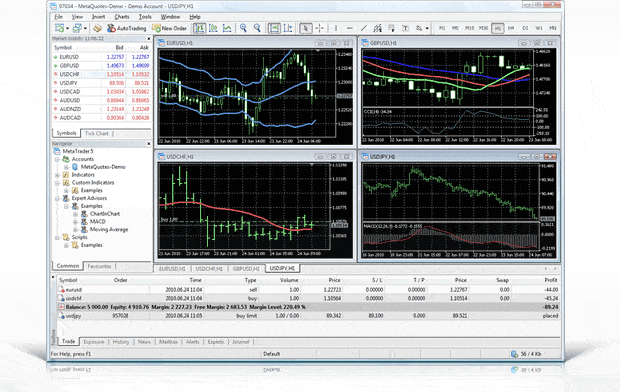Table of Contents
MetaTrader is a popular platform for forex trading, offering robust tools and features for traders. One of its key strengths is the ability to create custom indicators, allowing traders to implement their unique strategies and insights. However, custom indicators can sometimes be resource-intensive, leading to high CPU usage and excessive memory allocation. This can slow down the platform and negatively impact trading performance.

We will explore essential techniques for optimizing custom indicators in MetaTrader. By following these steps, you can enhance the efficiency of your indicators, ensuring they run smoothly without overburdening your system’s resources. Whether you are a seasoned trader or new to developing custom indicators, these tips will help you achieve a more streamlined and effective trading experience.
Before we talk about indicators optimizing, learn How to Speed up the MetaTrader platform when MT4 is Running Slow:
Optimizing a custom indicator in MetaTrader to minimize CPU usage and memory allocation involves several key steps. Here are some general tips and techniques to achieve this:
1. Efficient Looping
Minimize the number of iterations in loops. Avoid unnecessary calculations within loops and reduce the loop range whenever possible.
int start = MathMax(0, Bars - 1000); // Process only the last 1000 bars
for (int i = start; i < Bars; i++) {
// Your calculations here
}
2. Use Static and Global Variables
Avoid redeclaring variables inside frequently called functions. Use static or global variables when appropriate.
double myVar; // Global variable
void OnCalculate() {
// Use myVar here
}
3. Avoid Redundant Calculations
Store the results of expensive calculations if they must be used multiple times.
double ema = iMA(NULL, 0, 14, 0, MODE_EMA, PRICE_CLOSE, 0);
for (int i = 0; i < Bars; i++) {
// Use ema here instead of recalculating
}
4. Optimize Memory Usage
Avoid unnecessary memory allocation. Reuse arrays and other data structures whenever possible.
double myArray[];
ArrayResize(myArray, Bars);
for (int i = 0; i < Bars; i++) {
// Fill myArray with values
}
5. Use Built-in Functions
Leverage built-in functions that are optimized for performance.
double movingAverage = iMA(NULL, 0, 14, 0, MODE_SMA, PRICE_CLOSE, 0);
6. Conditional Statements
Use conditional statements to skip unnecessary calculations.
if (rates_total < 100) {
return 0; // Skip processing if there are fewer than 100 bars
}
7. Efficient Data Access
Access price data efficiently using functions like iClose, iOpen, iHigh, and iLow.
double closePrice = iClose(NULL, 0, 0);
8. Optimize Indicator Buffers
Minimize the number of indicator buffers and their sizes.
#property indicator_buffers 2
double buffer1[];
double buffer2[];
int OnInit() {
SetIndexBuffer(0, buffer1);
SetIndexBuffer(1, buffer2);
ArraySetAsSeries(buffer1, true);
ArraySetAsSeries(buffer2, true);
return INIT_SUCCEEDED;
}
Example of an Optimized Indicator
Here’s an example of an optimized custom indicator:
#property indicator_separate_window
#property indicator_buffers 1
#property indicator_color1 Red
double buffer1[];
int OnInit() {
SetIndexBuffer(0, buffer1);
ArraySetAsSeries(buffer1, true);
return INIT_SUCCEEDED;
}
int OnCalculate(const int rates_total, const int prev_calculated, const datetime &time[], const double &open[], const double &high[], const double &low[], const double &close[], const long &tick_volume[], const long &volume[], const int &spread[]) {
int start = prev_calculated > 0 ? prev_calculated - 1 : 0;
for (int i = start; i < rates_total; i++) {
buffer1[i] = iMA(NULL, 0, 14, 0, MODE_SMA, PRICE_CLOSE, i);
}
return rates_total;
}
Additional Tips
- Profile Your Code: Use the MetaEditor Profiler to identify performance bottlenecks.
- Reduce Indicator Updates: Minimize the frequency of indicator updates.
- Code Optimization: Review and optimize your code regularly.
By following these guidelines, you can create custom indicators in MetaTrader that are efficient in CPU usage and memory allocation.
























